AIKEN, S.C. (Nov. 1, 2019) – After years of development and testing, a radiation detection system developed by the Department of Energy ‘s Savannah River National Laboratory is now in full-scale operation at major United States shipping ports. In 2018,…
Tag: Atomic Physics
Scientists develop strategy to stabilize single atoms with ionic liquid as electronic stabilizer
Supported single-atom catalysts (SACs) have emerged as a new frontier in heterogeneous catalysis and have attracted broad interest for their demonstrated good catalytic performance due to high atomic efficiency and relatively homogeneous active sites. Strategies have been developed to fabricate…
SRNL radiation detection systems operating at ports of Tacoma and NY/NJ
AIKEN, S.C. (Nov. 1, 2019) – After years of development and testing, a radiation detection system developed by the Department of Energy ‘s Savannah River National Laboratory is now in full-scale operation at major United States shipping ports. In 2018,…
Scientists spy unstable semiconductors
New observations using state-of-the-art techniques could help to build better electronics in smartphones, GPS and satellites
Scientists develop strategy to stabilize single atoms with ionic liquid as electronic stabilizer
Supported single-atom catalysts (SACs) have emerged as a new frontier in heterogeneous catalysis and have attracted broad interest for their demonstrated good catalytic performance due to high atomic efficiency and relatively homogeneous active sites. Strategies have been developed to fabricate…
SRNL radiation detection systems operating at ports of Tacoma and NY/NJ
AIKEN, S.C. (Nov. 1, 2019) – After years of development and testing, a radiation detection system developed by the Department of Energy ‘s Savannah River National Laboratory is now in full-scale operation at major United States shipping ports. In 2018,…
FEFU and FEB RAS scientists are close to Integrate Silicon Electronics and Spintronics
They developed nanoheterostructure which can be used as a source of spin-polarized electrons for the semiconductor silicon substrate
American Physical Society invites Fort Lauderdale to discover plasma
Free hands-on science events offered to teachers, students and the public
Researchers watch quantum knots untie
After first reporting the existence of quantum knots, Aalto University & Amherst College researchers now report how the knots behave
JILA team demonstrates model system for distribution of more accurate time signals
JILA physicists and collaborators have demonstrated the first next-generation “time scale” — a system that incorporates data from multiple atomic clocks to produce a single highly accurate timekeeping signal for distribution. The JILA time scale outperforms the best existing hubs…
A new stable form of plutonium discovered at the ESRF
An international team of scientists, led by the Helmholtz Zentrum Dresden-Rossendorf (HZDR), have found a new compound of plutonium with an unexpected, pentavalent oxidation state, using the ESRF, the European Synchrotron, Grenoble, France. This new phase of plutonium is solid…
Creating a single phonon in ambient conditions
We call a crystal lattice. The structure of this lattice determines most mechanical and thermal properties of the bulk solid. However, the atoms within the lattice are not still but instead vibrate around their central position. This movement is generally…
Pressure may be key to fighting climate change with thermoelectric generators
New way to use compression techniques to improves thermoelectric performance, bringing researchers closer to practical applications that could help fight climate change
Cesium vapor aids in the search for dark matter
Physicists at Mainz University manage to further narrow down range of the search for dark matter
Lyncean Technologies awarded €49M to provide world’s most advanced gamma-ray source
Lyncean Technologies, a pioneer in compact accelerator-based light sources for use in science and industry, on October 4th signed a contract with the “Horia Hulubei” National Institute for Research and Development in Physics and Nuclear Engineering (IFIN-HH), Romania, to build…
Next-generation single-photon source for quantum information science
Kwiat group achieves most efficient single-photon production ever
Beyond Einstein: Mystery surrounding photon momentum solved
Physicists at Goethe University measure miniscule effect with new super COLTRIMS apparatus / Publication in Nature Physics
A metronome for quantum particles
A new measurement protocol, developed at TU Wien (Vienna), makes it possible to measure the quantum phase of electrons – an important step for attosecond physics.
Borophene on silver grows freely into an atomic ‘skin’
Rice scientists lead effort to improve manufacture of valuable 2D material
Physicists found weak spots in ceramic/graphene composites
Physicists found out the structures in nanomaterials made of ceramic and graphene plates, in which cracks appear most frequently
Researchers can now place single ions into solids
New technique enables implantation of individual ions into crystals with an accuracy of 35 nanometers
Christian Smorra receives ERC starting grant for antimatter research
Funding for the development of a trap for the transport of antiprotons from CERN to Mainz; researchers expect to greatly enhance measuring accuracy
Dartmouth research advances noise cancelling for quantum computers
Experiment with MIT marks important step in development of more precise qubit systems
Spin devices get a paint job
Simple copper becomes an effective spintronic component thanks to molecular film
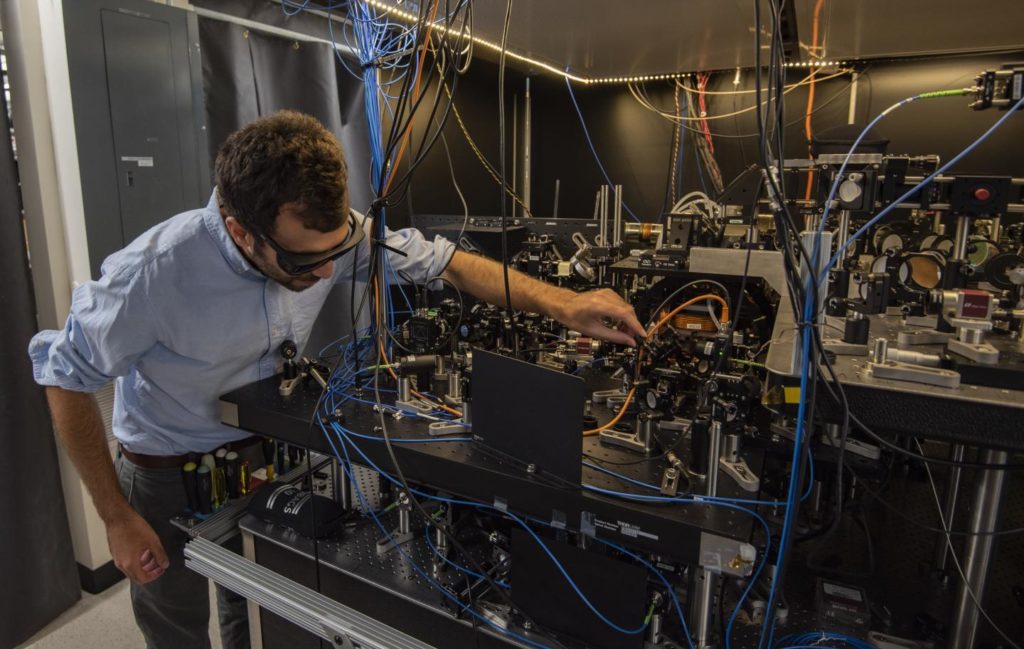
JILA’s novel atomic clock design offers ‘tweezer’ control
JILA physicists have demonstrated a novel atomic clock design that combines near-continuous operation with strong signals and high stability, features not previously found together in a single type of next-generation atomic clock. The new clock, which uses laser “tweezers” to…

Q-CTRL leaps into the global top-10 of quantum start-ups
Professor Michael Biercuk’s company announces $15m funding round
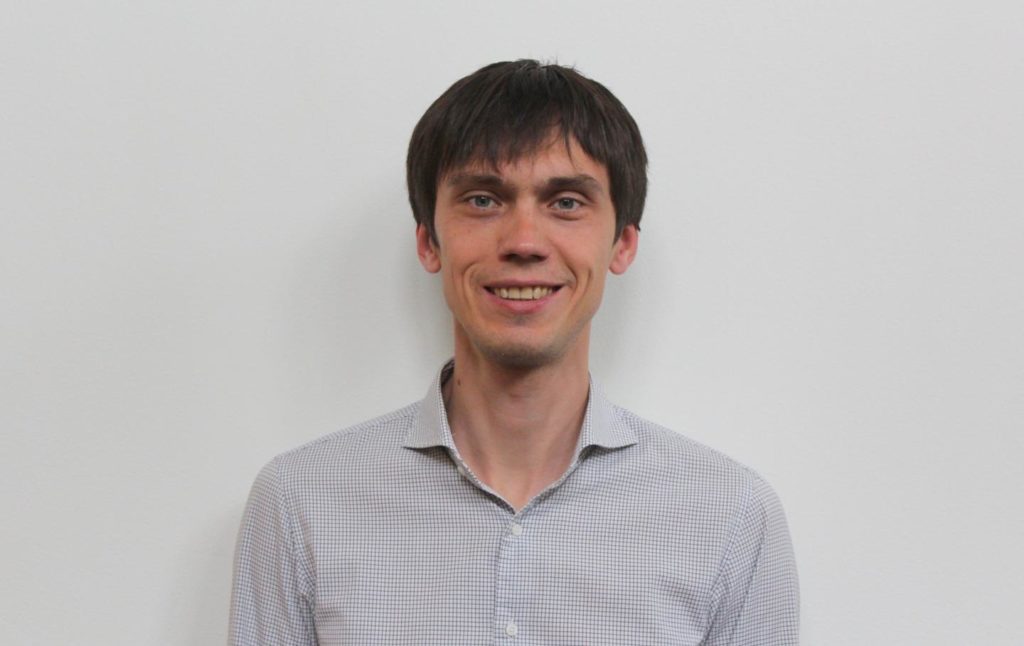
Breakthrough Foundation honors UW researcher studying ‘exotic’ states of matter
Lukasz Fidkowski, an assistant professor of physics at the University of Washington, is one of the winners of a 2020 New Horizons in Physics Prize from the Breakthrough Foundation. The prize to early-career scientists, announced Sept. 5, recognizes Fidkowski and…

AIP Endowed Professor in History of Natural Sciences named at University of Maryland
Melinda Baldwin will join faculty starting in fall 2020
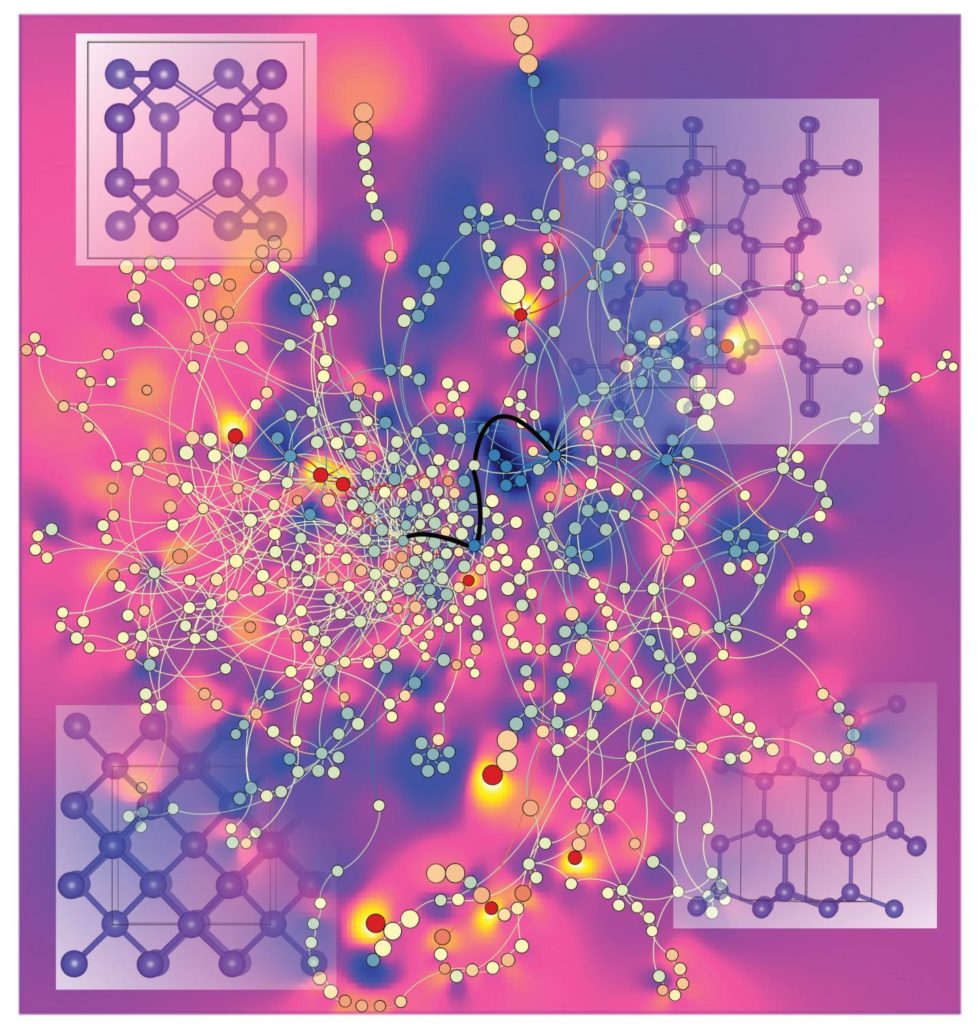
A “GPS” to guide the discovery of new materials
The ability to accurately predict synthetic pathways to create new materials and control their prope
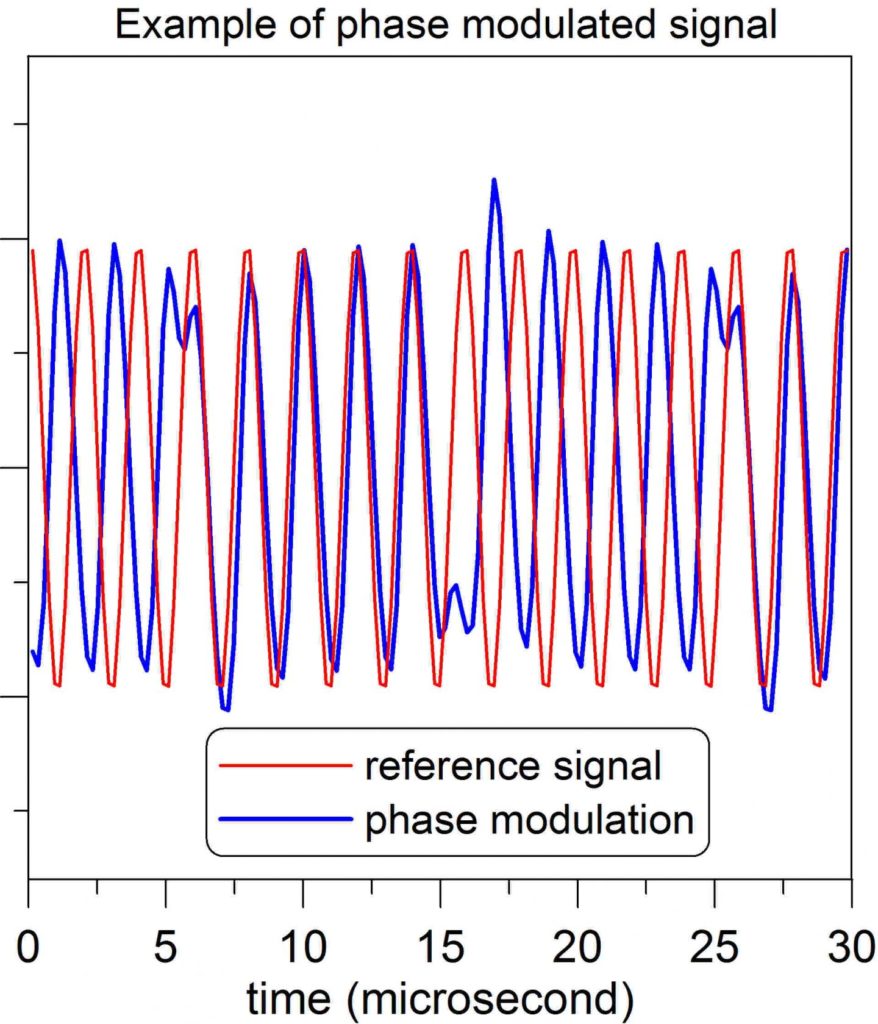
NIST team shows atoms can receive common communications signals
Researchers at the National Institute of Standards and Technology (NIST) have demonstrated a new type of sensor that uses atoms to receive commonly used communications signals. This atom-based receiver has the potential to be smaller and work better in noisy…

Closing in on elusive particles
Major steps forward in understanding neutrino properties
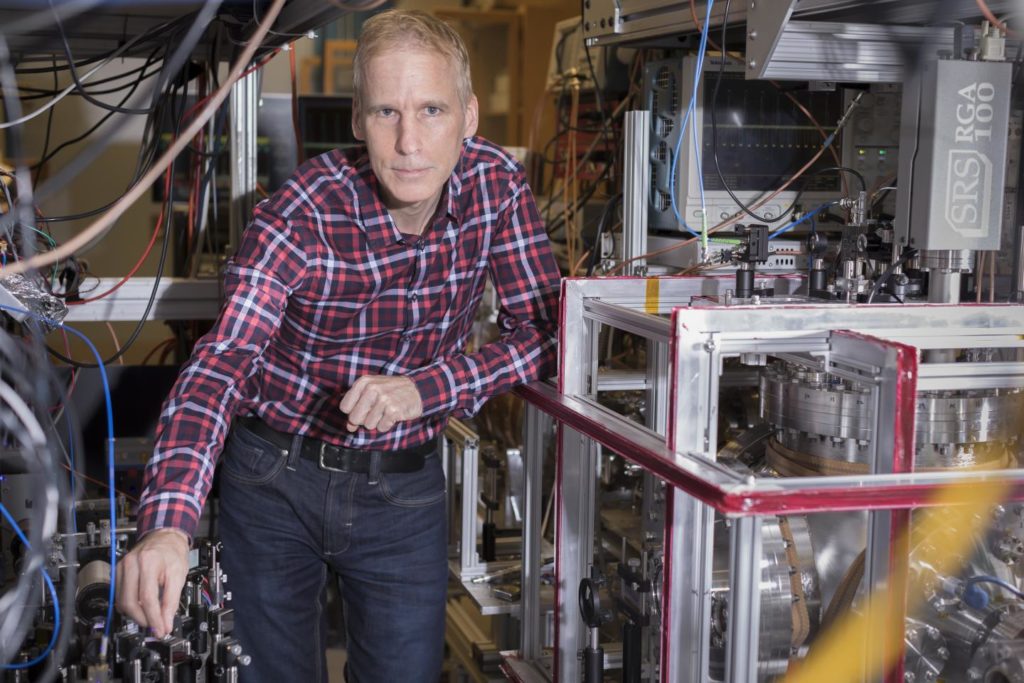
Scientists measure precise proton radius to help resolve decade-old puzzle
York University research confirms protons are smaller than expected
Corralling quantum cats: from Cheshire cat to Schrodinger’s cat
New book helps readers better understand the elusive ‘Cheshire cat’ we call the quantum world, and s
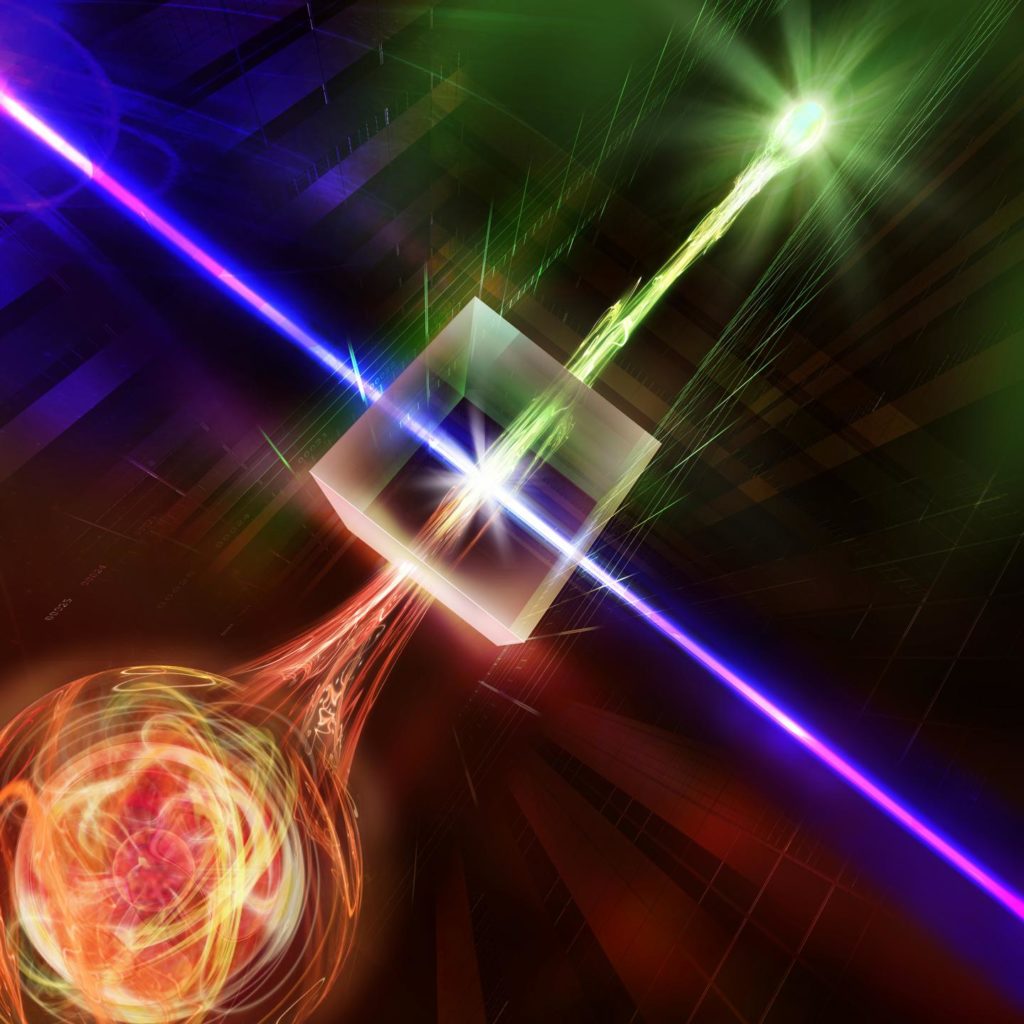
Entanglement sent over 50 km of optical fiber
A milestone for a future quantum internet
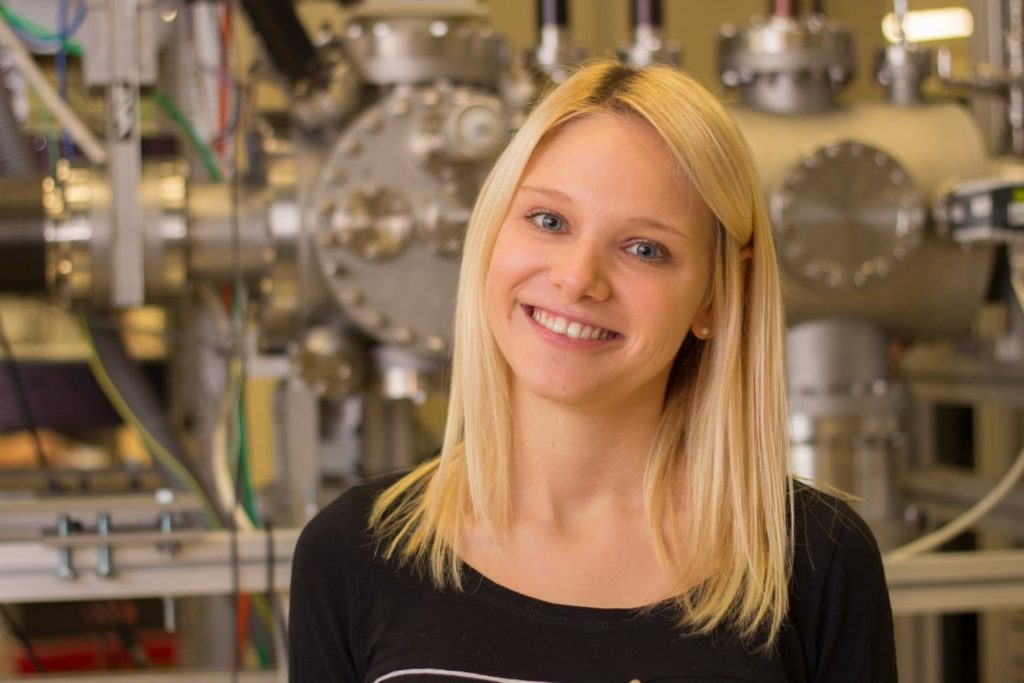
Slow electrons to combat cancer
Ion therapy harnesses complex atomic effects to destroy cancer cells. Now, researchers at TU Wien ha
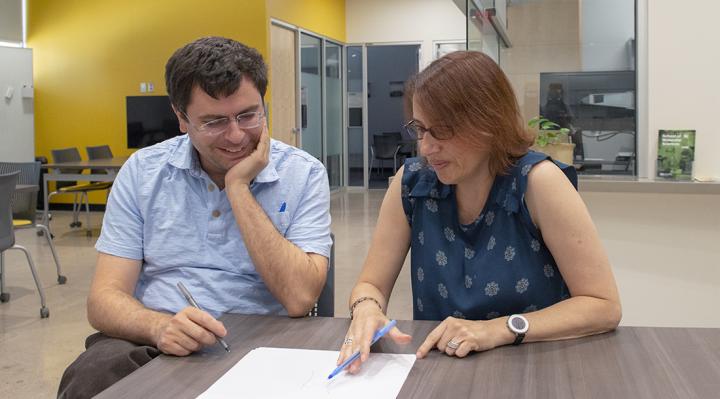
ASU researchers use new tools of data science to capture single molecules in action
In high school chemistry, we all learned about chemical reactions. But what brings two reacting molecules together? As explained to us by Einstein, it is the random motion of inert molecules driven by the bombardment of solvent molecules. If brought…
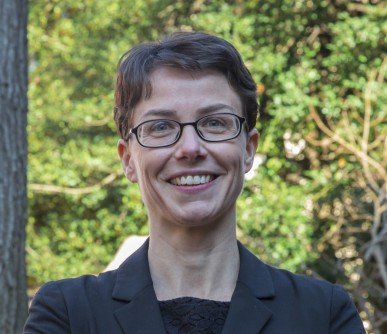
Blavatnik Awards for Young Scientists Announces 2019 National Laureates
An ecologist from Stony Brook University, a theoretical physicist from University of Colorado Boulder and a chemical biologist from Harvard University Three female scientists have been named Laureates of the Blavatnik National Awards for Young Scientists, each receiving $250,000, the…